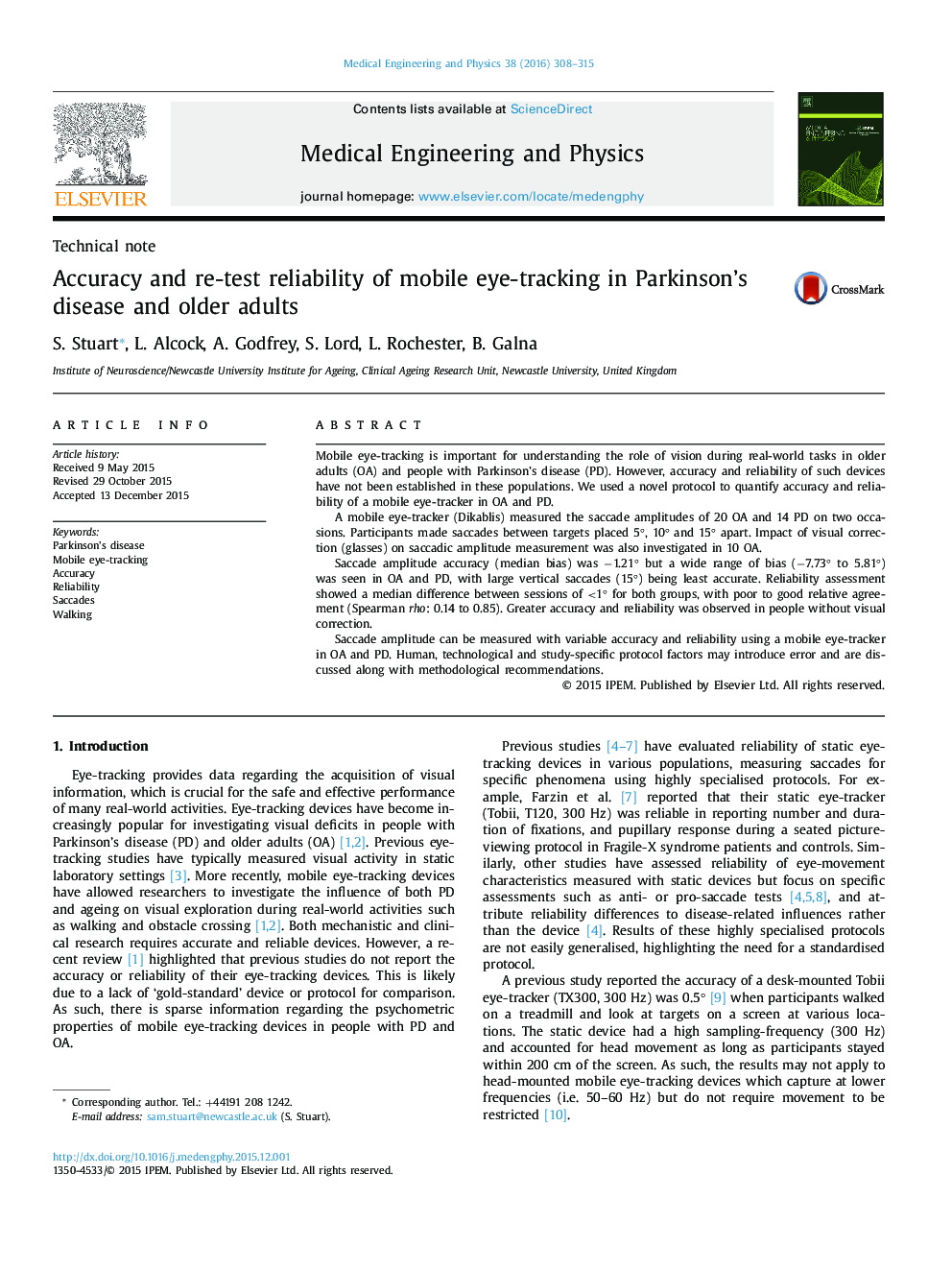| Article ID | Journal | Published Year | Pages | File Type |
|---|---|---|---|---|
| 875740 | Medical Engineering & Physics | 2016 | 8 Pages |
•Mobile eye-tracker accuracy and reliability has not been established in OA and PD.•We provide a novel accuracy and reliability protocol for mobile eye-trackers.•Saccade amplitude measured via a mobile eye-tracking device is variable.•Human, technological and study protocol factors impact eye-tracker measurement.
Mobile eye-tracking is important for understanding the role of vision during real-world tasks in older adults (OA) and people with Parkinson's disease (PD). However, accuracy and reliability of such devices have not been established in these populations. We used a novel protocol to quantify accuracy and reliability of a mobile eye-tracker in OA and PD.A mobile eye-tracker (Dikablis) measured the saccade amplitudes of 20 OA and 14 PD on two occasions. Participants made saccades between targets placed 5°, 10° and 15° apart. Impact of visual correction (glasses) on saccadic amplitude measurement was also investigated in 10 OA.Saccade amplitude accuracy (median bias) was −1.21° but a wide range of bias (−7.73° to 5.81°) was seen in OA and PD, with large vertical saccades (15°) being least accurate. Reliability assessment showed a median difference between sessions of <1° for both groups, with poor to good relative agreement (Spearman rho: 0.14 to 0.85). Greater accuracy and reliability was observed in people without visual correction.Saccade amplitude can be measured with variable accuracy and reliability using a mobile eye-tracker in OA and PD. Human, technological and study-specific protocol factors may introduce error and are discussed along with methodological recommendations.
